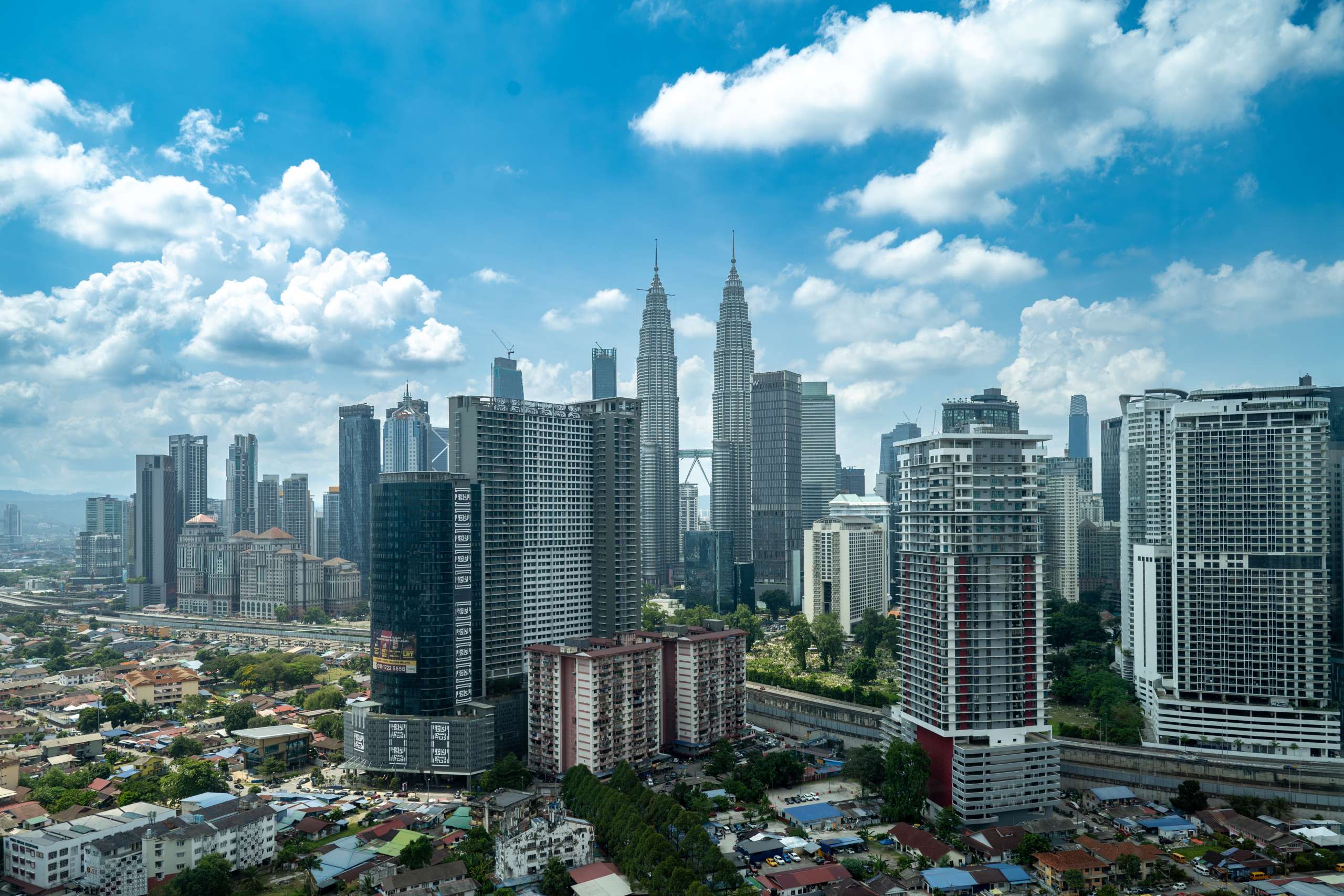Newsletter
Keep yourself update with our current news for Juwai IQI

Juwai IQI Newsletter – Real Estate Market – August 2025
The global real estate market saw mixed results in July, with some areas improving and others struggling.What else have you missed in August 2025Click now! Download
29 July

Global Real Estate Trends 2025: Key Investment Opportunities
The contents of this article were contributed by Taco Heidinga, IQI Global Strategic Advisor.As the second half of 2025 unfolds, global real estate investment is undergoing significant transformation, driven by evolving demographics, economic shifts, and changing lifestyle preferences. Key investment opportunities are emerging in "migration corridors", where increased demand from remote workers seeking a better quality of life is leading to faster property appreciation. Concurrently, sustainability is a major driver, with a growing preference for eco-friendly developments incorporating:green technologiesenergy-efficient systemssustainable materialsThese preferences are aligning with environmentally conscious buyers and renters. The integration of smart home technologies, virtual reality tours, and blockchain for secure transactions is also becoming standard, with investors prioritizing properties that offer enhanced operational efficiencies and tenant experiences.The pandemic has reshaped urban versus suburban dynamics, with a notable shift towards suburban areas offering larger and more affordable living options, even as major cities retain their appeal. Investors are advised to assess growth potential in these suburban markets, particularly those with easy access to urban centers. Furthermore, understanding the regulatory environment and market stability of foreign markets is crucial. Countries with favorable foreign ownership laws, transparent tax structures, and stable political landscapes are increasingly attractive, necessitating thorough due diligence for secure and compliant investments. Finally, health and wellness trends are influencing property design, with amenities like fitness centers and green spaces boosting property value and appeal. In a volatile global economy, diversification remains a critical strategy, prompting investors to look beyond traditional markets to emerging economies in regions such as Africa and Latin America, which offer high growth potential due to their burgeoning middle classes and urbanization. Remaining agile and informed on these trends:migrationsustainabilitytechnologyregulatory environmentshealthdiversification These trends will enable investors to capitalize on the opportunities within the evolving global property market. Stay ahead of the curve with the latest insights on global property trends, migration-driven hotspots, sustainability, and emerging markets. Discover where the smartest investors are heading next — read the full August 2025 Newsletter today.DOWNLOAD NOWThe contents of this article were contributed by Taco Heidinga.Taco Heidinga is a global real estate leader with nearly 20 years of experience. He is the founder of Propcoach International, empowering professionals in 20+ countries. His Act, Attract, Impact method transforms careers through innovation and leadership.
22 July

Reduced OPR: What It Means for Malaysia’s Property Market in 2025
Written by Muhazrol Muhamad, GVP, Head of Bumiputra Segment In July 2025, Bank Negara Malaysia (BNM) significantly reduced the Overnight Policy Rate (OPR) from 3.00% to 2.75%, a move anticipated to profoundly impact Malaysia's property market. This OPR cut has led to lower base rates from banks, directly translating into cheaper monthly loan installments for homeowners, potentially saving RM70-RM75 per month on a typical RM500,000 home loan. This reduction significantly boosts housing affordability, particularly for the M40 segment and first-time homebuyers, offering a prime opportunity to secure more favorable financing terms for new launches under RM500,000, which currently constitute a substantial portion of new supply. While Q1 2025 saw a dip in transactions, the OPR cut is expected to renew interest from buyers, providing developers with a much-needed boost in take-up rates. Existing homeowners also stand to benefit from lower rates, with increased potential for refinancing to reduce costs or shorten loan tenures amidst rising competition among banks. However, this optimism is tempered by the fact that the OPR cut was a response to weaker global growth forecasts, and domestic factors like SST expansion and rising living costs may still cause some Malaysians to delay major purchases. Furthermore, investors should remain cautious due to oversupply in certain high-rise segments, particularly in Klang Valley, which could lead to uneven property appreciation. Ultimately, this OPR cut is seen as a turning point, making Malaysia's real estate market more affordable, competitive, and potentially more exciting for buyers, sellers, and developers alike.
22 July

Rebalancing in a Shifting Global Landscape
Written by Hamid R. Azarmi, Head of Business DevelopmentWith geopolitical tensions easing and the Strait of Hormuz remaining fully operational, markets have moved back toward stability. Oil prices have corrected to the $68–$70 range, providing a moment for investors to reassess energy positions. While short-term exposure to energy equities and ETFs has delivered, now is a sensible time to take profits and rotate toward longer-term structural plays. Areas such as infrastructure, clean energy logistics, and pipeline REITs are still poised for durable growth. Meanwhile, global equities have pushed higher as risk appetite returns. The rotation into industrials, materials, and select tech is gaining steam, particularly among companies with strong pricing power and international exposure. Investors may also consider increasing allocations to industrial metals like copper and nickel, which benefit from the ongoing buildout in data centers, EV supply chains, and energy storage infrastructure. In real assets, opportunities are resurfacing in logistics REITs and smart-city projects, where post-conflict clarity is restoring investor confidence. As we move deeper into Q3, maintaining balance is key. Keep core exposure to quality equities, consider moderate positions in commodities, and hold cash or short-duration fixed income as dry powder. While the news cycle has calmed, fundamentals are now the driver. This is an environment where disciplined positioning, not headlines, will determine returns.
22 July

IQI Cares & Celebrates: Supporting Ahsana KL and Rewarding Top Agents
IQI Cares Brings Meaningful Support to Ahsana KL As part of its ongoing commitment to social responsibility, IQI Cares conducted a meaningful outreach initiative at Persatuan Kebajikan Ahsana Kuala Lumpur, a centre dedicated to providing care and shelter to those in need. The visit was more than a gesture—it was a reaffirmation of IQI’s dedication to building stronger, more compassionate communities. Contributions included two medical beds to enhance resident comfort, a newly installed door to improve safety, daily groceries to support ongoing needs, and a financial donation to assist with the centre’s operations. This initiative reflects IQI’s belief that even modest efforts can create profound impact. IQI extends its heartfelt appreciation to Ahsana KL for the warm welcome and opportunity to contribute to their vital work. Top-Performing IQI Agents Celebrate Success with Exclusive Incentive Trip to Bali In celebration of exceptional performance and dedication, more than 30 top agents from IQI were rewarded with an exclusive incentive trip to Bali, marking a memorable milestone in their professional journey. The trip served as both a recognition of their achievements and an opportunity to strengthen camaraderie among high-performing team members across regions. Against the island’s stunning landscapes, agents enjoyed a blend of cultural exploration, relaxation, and curated experiences, reaffirming IQI’s commitment to cultivating a people-first, performance-driven culture. This well-deserved getaway not only acknowledged their hard work but also inspired continued excellence and collaboration within the global IQI network.
22 July

Mainland Buyers Reignite Hong Kong’s Super-Luxury Property Market in 2025
Written by Dave Platter, Global PR DirectorDave Platter's July 2025 newsletter highlights a significant resurgence of Mainland Chinese buyers in Hong Kong's super-luxury housing market. Between January and May 2025, these buyers accounted for approximately 70% of all Hong Kong home sales over HK$100 million, including prestigious addresses like Mount Nicholson and Barker Road. This trend indicates a strong recovery in the high-end sector, with 42 super-luxury home sales exceeding USD 10millionrecordedsofarthisyear,a17144,415 per square foot for a first-hand stratified unit in June. While overall Hong Kong home prices are still 28% below their 2021 peak, these recent high-value transactions signal a distinct pivot in the luxury market. Nelson Li, Director of IQI Hong Kong, attributes this momentum to proactive efforts over recent months, including bringing overseas buyers from regions like Thailand, Australia, Dubai, Japan, and Indonesia to Hong Kong. An anecdotal example of this strong demand is a mainland buyer swiftly purchasing a HK$1 billion house at Mont Verra in Kowloon Tong, even before another interested buyer from Dubai could finalize their money transfer, underscoring the intense competition for prime properties in the city.
22 July

Global Slowdown & US Dollar Weakness: A 2025 Perspective
Written by Shan Saeed, IQI Chief EconomistThe global economic outlook for 2025 is characterized by a slowdown, largely driven by non-financial events such as escalating geopolitical tensions, trade fragmentation, and evolving policy frameworks. Goldman Sachs highlights significant concerns regarding US fiscal health, particularly with the Trump Administration's "One Big Beautiful Bill Act." This legislation is expected to worsen the US deficit and debt, which are already at historically high levels outside of crisis periods, with interest expenses at record highs. These fiscal challenges suggest an unsustainable long-term trajectory for the US. In this shifting global landscape, the US dollar has experienced a substantial decline, losing 10.5% of its value year-to-date in 2025, marking its worst first half since 1973. This depreciation is attributed to the impact of Donald Trump's trade and economic policies, which have prompted global investors to reconsider their exposure to the dominant currency. The dollar's sharp fall puts it on track for its weakest six-month performance since 2009, reflecting a re-evaluation of its strength amidst the Federal Reserve's policy complexities.
22 July

5-STAR HOTELS ADD ENORMOUS VALUE TO CITIES
Written by Irhamy Ahmad, Founder and Managing Director of Irhamy Valuers InternationalMalaysia, a vibrant Southeast Asian gem, is renowned for its rich cultural diversity, stunning landscapes, and world-class hospitality. Among the many attractions that draw travelers to this tropical paradise are its luxurious 5-star hotels and resorts, which offer an unparalleled blend of comfort, elegance, and service. From the bustling streets of Kuala Lumpur to the serene islands of Langkawi and Penang, Malaysia boasts a wide array of top-tier accommodations that cater to discerning travelers. These establishments are not just places to rest but immersive experiences in themselves, combining modern amenities with traditional Malaysian charm. The Ritz-Carlton Kuala Lumpur, near the iconic Petronas Towers, offers opulent rooms, award-winning dining, and a heritage-inspired spa. For a nature-based retreat, The Datai Langkawi delivers eco-luxury with rainforest villas overlooking the Andaman Sea. Other standout names include Shangri-La’s Rasa Sayang Resort in Penang and Banyan Tree Kuala Lumpur, both known for exceptional hospitality, fine dining, and and top-tier amenities. These 5-star hotels reflect Malaysia’s blend of culture, comfort, and strategic location—making each stay luxurious and memorable. Beyond the guest experience, 5-star hotels add enormous value to any cities they are in, as they attract wealthy individuals and families.
22 July

































